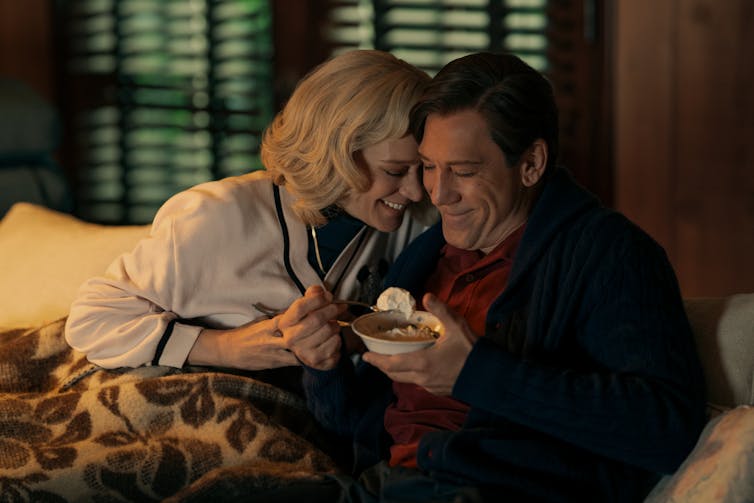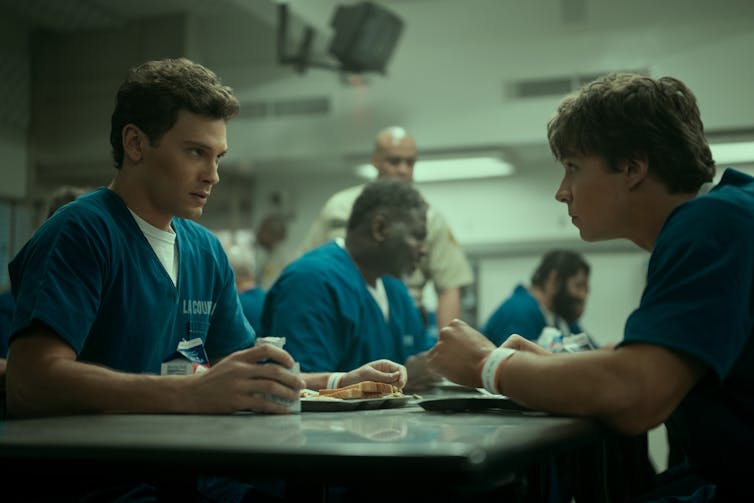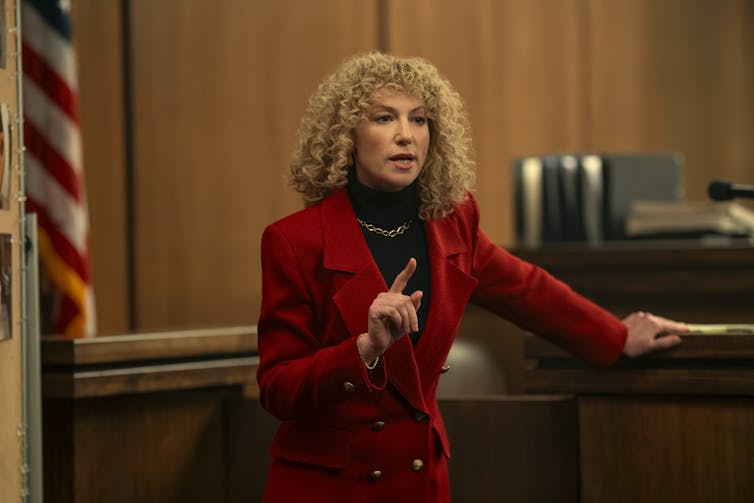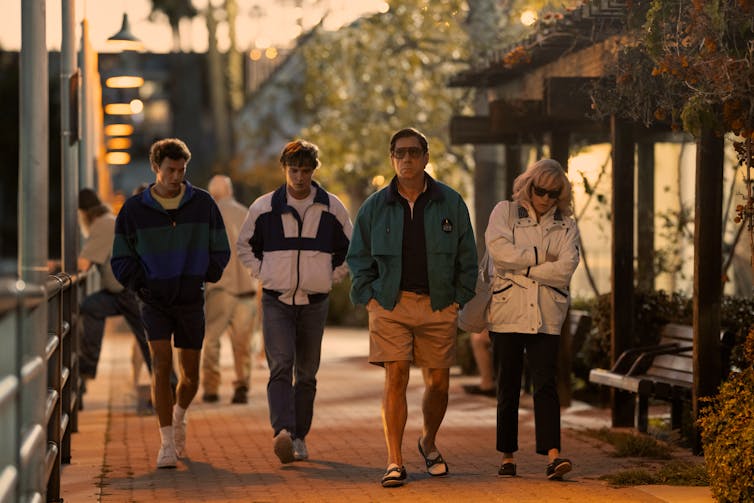Source: The Conversation (Au and NZ) – By Xanthe Mallett, Forensic Criminologist, University of Newcastle

Are we products of nature or nurture?
That’s the age-old question at the heart of Ryan Murphy and Ian Brennan’s new Netflix release, Monsters: The Lyle and Erik Menéndez Story. The show focuses on the 1989 murders of José and Kitty Menéndez by their sons Erik and Lyle.
The prosecution convinced a jury the two brothers were cold-blooded killers, driven by the desire to access their parents’ wealth. The brothers, meanwhile, claim to be victims of physical, emotional and sexual abuse at the hands of their parents – and say the killings were therefore self-defence.
What’s the truth? Perhaps both.

Netflix
Creating the image of a ‘monster’
The case details are well known. In fact, I have taught this case to my own criminology students as an example of the victim-offender overlap, as clearly these brothers existed in a very dysfunctional family.
On August 20 1989, brothers Lyle (then 21) and Erik (then 18) shot and killed their parents in their Beverly Hills mansion. They faced two trials. The first one in 1993 saw the brothers tried separately and ended in two hung juries and subsequent mistrials.
In the second trial, which began in 1995, the pair were tried together. In 1996 they were found guilty of first-degree murder and conspiracy to commit murder, and sentenced to life in prison without the possibility of parole.
Interestingly, the prosecution raised new objections to the admission of a large amount of defence evidence in the second trial, so the judge consequently excluded much of the evidence of abuse.
This essentially dismantled the brothers’ entire defence, which was predicated on the fact they killed their parents out of fear, after they threatened to expose their father for serious and protracted physical, sexual and emotional abuse.

Netflix
The Netflix series has created significant controversy. It documents a version of events leading up to the murders, including detailed histories of both Lyle’s and Erik’s sexual abuse, as well as the crimes themselves and subsequent trials.
In the series, the brothers are portrayed in a homoerotic and incestuous way. For context, back in 1995 Lyle testified that he sexually offended against Erik, but this was against the background of the alleged sexual abuse from their father.
Monsters, on the other hand, shows the brothers having an incestuous relationship as adults. The brothers deny this and there’s little evidence to support it.
While the pair is sometimes painted in a sympathetic light, at other times the viewer is led to question whether greed was their true motive.
Erik Menéndez has slammed the series, saying it walks back on decades of understanding of the devastating impacts sexual abuse has on male victims.
I have to agree.
The brothers didn’t just kill their parents and call it a day. These murders were incredibly brutal. As a criminologist, it looked to me like they were trying to obliterate their parents.
José was shot in the back of the head, execution-style, while Kitty was shot a total of ten times, including one shot directly to her face. Such crimes are generally not motivated by money; they tend to be driven by something much deeper.

Netflix
Murder porn at its worst
This case can be seen through the ghoulish eyes of “murder porn”. The first trial, which was televised in 1993, went viral on TikTok in 2021, engaging a new generation of fans.
Watching the footage from the 1990s, some of us will remember the legions of screaming girls who welcomed the handsome brothers to court. It was more like a scene from a boyband concert than a brutal double-murder trial.
Whether you believe the brothers are cold-blooded and opportunistic killers, or victims of serious child abuse, will influence your take on the ongoing interest in the case and the portrayal in Monsters.

Netflix
Monsters isn’t the first example of Ryan Murphy and Ian Brennan cheapening real tragedies by turning them into voyeuristic and fictionalised television.
The first instalment of the same series focused on Jeffrey Dahmer, a serial killer and sex offender who killed 17 men and boys between 1978 and 1991. Dahmer also engaged in necrophilia and cannibalism, so his brutal crimes were rich fodder for Netflix.
Dahmer’s victims were openly critical, saying the retelling of the offender’s story diminished their loved ones’ suffering and revictimised them by opening old wounds.
Regardless, Dahmer achieved critical acclaim with 13 nominations at the 2023 Emmy Awards, no doubt spurring the creators’ enthusiasm to further develop the franchise.
The way forward
The path to ethical true crime depiction lies in establishing facts and veering away from embellishing or glorifying the criminal or their crimes.
Ideally, true crime should be victim focused and should achieve a purpose beyond entertainment. We have a lot to learn from criminal history, but these stories should be told in educational ways that respect and honour victims’ lives.

Netflix
We each have a responsibility to consume ethically produced true crime. Whether it’s TV series, films, podcasts or books, we vote for what we want through our engagement. My maxim is to choose content that reflects how I would want my story told, were I to ever become the focus of a true crime production.
If you’re curious to hear more about the Menéndez brothers’ story, a new Netflix documentary called The Menéndez Brothers is set for release on October 7. Both Erik and Lyle have contributed to it through phone interviews conducted from prison – and they say there’s much that hasn’t been told.
![]()
Xanthe Mallett does not work for, consult, own shares in or receive funding from any company or organisation that would benefit from this article, and has disclosed no relevant affiliations beyond their academic appointment.
– ref. Netflix’s Monsters is ‘murder porn’ at its worst. It comes at a cost to real victims – and the truth – https://theconversation.com/netflixs-monsters-is-murder-porn-at-its-worst-it-comes-at-a-cost-to-real-victims-and-the-truth-239596








